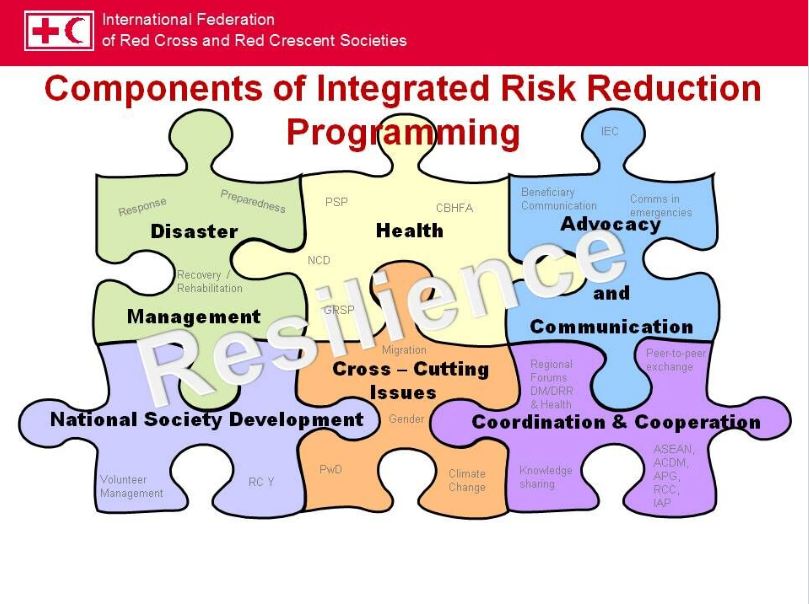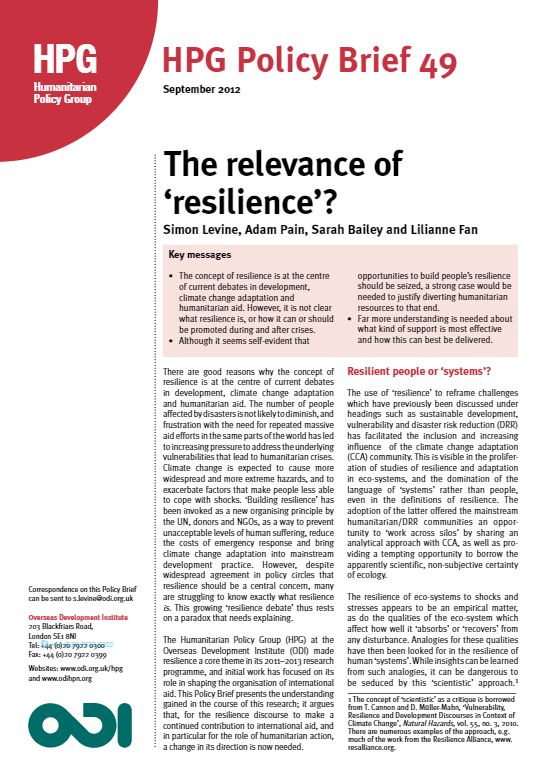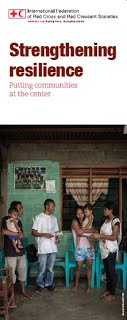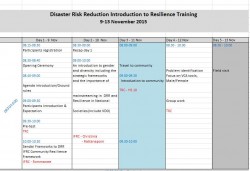The Lessons Learned (LL) workshop is the opportunity for project stakeholders to come together and share insights and experiences of working with and on the Regional Resilience Initiative (RRI) project. Stakeholders are facilitated – through a structured analysis approach – to share opinions, perspectives and experiences related to the project. The main LL approach is essentially a project assessment that can be framed as key questions as follows:
1. What worked well in the project?
2. What could have been improved in the project?
3. What could and should be done differently next time?
The LL exercise should draw on both positive experiences i.e. good ideas that improve project efficiency and/or effectiveness, as well as negative experiences.
Background
In April 2014, IFRC launched the RRI project, which was a 4-year endeavour funded by the Canadian Government (GAC – Global Affairs Canada) and the Canadian Red Cross (CRC). The Initiative supported 11 National Red Cross and Red Crescent (RCRC) Societies (NS) in Southeast Asia with the overarching goal of reducing the impact of natural disasters on vulnerable communities.
Specifically, the Initiative sought to enhance skills and capacities within NS so that they could advocate more strongly at national and regional levels for the needs of communities in disaster risk reduction (DRR). This approach was complemented by the strengthening of regional partnerships, both within RCRC networks and with key partners such as the Association of South East Asian Nations (ASEAN) Secretariat and other regional stakeholders.
In August 2017 a consultancy was commissioned to support the RRI Country Cluster Support Team (CCST) to illustrate the overall picture of RRI achievements in terms of intended outcomes, progress towards outcomes, and main achievements secured through the Initiative. A key part of this process was the hosting of a Lessons Learned workshop toward the end of the consultancy aimed at helping validate key findings and promote the learning gained from the RRI experience to a wider stakeholder audience.1 The workshop will be held over a period of 2 ½ days between 21-23 February 2018.
Click on these links to find more information on the workshop:
– Concept note
– Workshop agenda
– Participant list
Pre-workshop reading materials
– RRI infographic
– Case studies (4): Disaster Law, Gender and Diversity, Support to ASEAN, and Resilience Library
– Summary of the RRI Steering Committee Meeting in May 2017
– “Community Voices” videos (6) from Indonesia, Philippines, Myanmar (Fire), Thailand, Laos, and Vietnam.
– Timor Leste Red Cross ( CVTL) promoting community resilience
Opening Remarks
- Opening remarks by Ambassador of Canada to the ASEAN Marie-Louise Hannan
- Opening remarks by Deborah Cote, Program Manager Asia, International Operations, Canadian Red Cross
- Opening remarks by Marwan Jilani, Head of CCST, IFRC Bangkok
Presentations
Day 1:
Day 2:
Session 1: Localisation
- Preparedness for Effective Response
- Myanmar Red Cross Society
- Localization and Disaster Response
- Disaster Preparedness and Response in Lao PDR
- The Grand Bargain: Working Together efficiently and Effectively
Session 2: Sexual and Gender-Based Violence
- Gender-based violence in emergencies
- Presentation by Cambodia’s Women’s Affairs Ministry
- Examples of SGBV projects of CRC’s NS partners
Session 3: Advocacy
- Data and Information Collection and Post-Distribution Monitoring (PDM)
- The Sendai Framework Monitoring Process & CSO Contributions
- Using Evidence and Advocacy for Positive Change
Session 4: Peer-to-peer support and networking
- Peer-to-Peer Support and Networking
- Thai-Lao Cross Border Cooperation
- Regional Resilience Knowledge Hub
** Workshop report **
![]()










